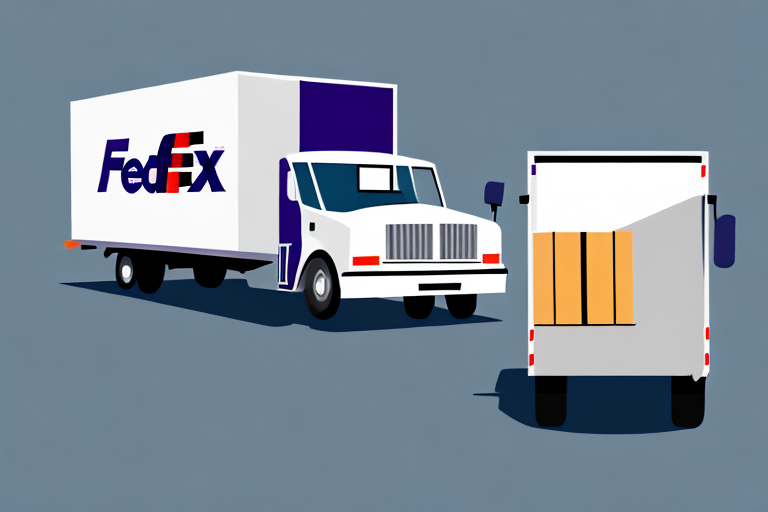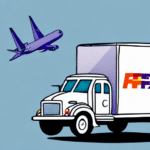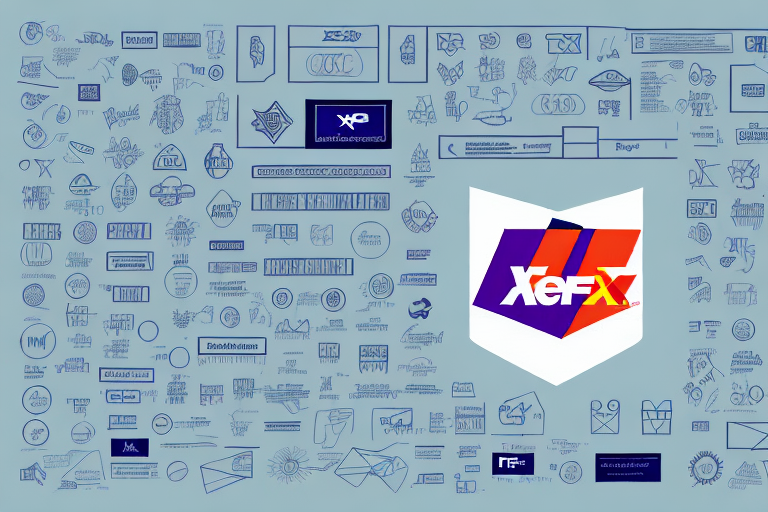What Are Delivery Exceptions and Why Do They Occur?
In the realm of shipping and logistics, delivery exceptions are unforeseen events that disrupt the smooth transit of packages from sender to recipient. These exceptions can lead to delays, misdeliveries, or even the loss of shipments. Understanding the nature and causes of delivery exceptions is crucial for businesses aiming to enhance their shipping reliability and customer satisfaction.
Delivery exceptions can occur at any stage of the shipping process—from package pickup to final delivery. Common causes include:
- Incorrect or Incomplete Addresses: Errors in address details can prevent successful delivery.
- Weather Conditions: Severe weather can delay transit times or halt deliveries altogether.
- Customs Clearance Issues: International shipments may face delays due to regulatory inspections.
- Damaged Packaging: Poor packaging can lead to package damage, necessitating returns or replacements.
- Theft or Loss: Packages can be lost or stolen during transit, especially in high-traffic areas.
According to the American Air Mover’s Association, addressing these issues proactively can significantly reduce the occurrence of delivery exceptions.
Common Causes of Delivery Exceptions and How to Avoid Them
Identifying and mitigating the common causes of delivery exceptions is essential for maintaining a reliable shipping process. Here are some primary causes and strategies to prevent them:
1. Incorrect or Incomplete Addresses
Ensure that both the sender and recipient provide accurate and complete address information. Utilize address verification tools to minimize errors.
2. Adverse Weather Conditions
Monitor weather forecasts in transit areas. When possible, plan alternative routes or adjust shipping schedules to accommodate potential delays.
3. Damaged Packaging
Invest in high-quality packaging materials to protect items during transit. Proper packaging reduces the risk of damage and subsequent delivery issues.
4. Customs Clearance Challenges
For international shipments, provide thorough and accurate customs documentation. Stay informed about the import regulations of the destination country to ensure compliance.
5. Delivery Driver Errors
Partner with reputable delivery services that have a track record of accuracy and reliability. Clear communication of delivery instructions can also help minimize human errors.
Implementing these preventive measures can significantly reduce the likelihood of delivery exceptions, ensuring timely and successful deliveries.
Effective Strategies for Managing Delivery Exceptions
When delivery exceptions occur, prompt and effective management is crucial to maintain customer trust and satisfaction. Here are strategies to handle such situations:
1. Immediate Communication with the Carrier
Contact the shipping carrier as soon as you identify a delivery exception. Early intervention can expedite the resolution process.
2. Collaborate on Solutions
Work closely with the carrier to explore options such as package rerouting, rescheduling delivery, or issuing refunds or replacements.
3. Keep Customers Informed
Maintain transparent communication with customers by providing regular updates on the status of their shipments. This helps manage expectations and reduces frustration.
4. Escalate When Necessary
If initial efforts do not resolve the issue, escalate the matter to higher authorities within the carrier’s organization to seek a more effective solution.
5. Utilize Insurance and Tracking
For valuable or time-sensitive items, use shipping methods that include insurance and detailed tracking to ensure accountability and security.
Implementing these strategies ensures that delivery exceptions are managed efficiently, minimizing their impact on both the business and the customer.
Leveraging Technology to Reduce Delivery Exceptions
Advancements in technology play a pivotal role in minimizing delivery exceptions and enhancing operational efficiency. Key technological tools include:
Real-Time Tracking Systems
GPS-enabled tracking allows both businesses and customers to monitor the exact location of shipments in real time, enabling proactive management of potential delays.
Automated Alerts and Notifications
Automated systems can notify stakeholders of any disruptions or changes in the delivery schedule, allowing for swift corrective actions.
Predictive Analytics
By analyzing historical data, predictive analytics can forecast potential delivery exceptions and allow businesses to address them before they occur.
Route Optimization Software
Advanced algorithms can determine the most efficient delivery routes, reducing transit times and the likelihood of encountering obstacles that lead to exceptions.
According to a Forbes Technology Council article, integrating these technologies not only reduces delivery exceptions but also enhances overall customer satisfaction by providing timely and reliable shipping experiences.
Impact of Delivery Exceptions on Your Business's Bottom Line
Delivery exceptions can have profound financial and reputational impacts on a business:
Financial Costs
Handling delivery exceptions often incurs additional expenses such as reshipping costs, refunds, and customer service efforts. These costs can accumulate, especially for businesses with high shipment volumes.
Customer Satisfaction and Retention
Repeated delivery issues can erode customer trust, leading to decreased repeat business and negative word-of-mouth reviews. A study by StickyMinds highlights that poor delivery experiences significantly impact overall customer satisfaction and loyalty.
Operational Efficiency
Frequent delivery exceptions can strain operational resources, diverting attention from primary business activities to resolving shipping issues.
Reputation Management
In the age of online reviews and social media, delivery exceptions can quickly tarnish a company’s reputation. Proactively managing and minimizing exceptions is essential for maintaining a positive brand image.
By addressing delivery exceptions effectively, businesses can mitigate these negative impacts and sustain a healthy bottom line.
Future Trends in Delivery Exception Management
The landscape of delivery exception management is continuously evolving, driven by technological innovations and changing consumer expectations. Emerging trends include:
Artificial Intelligence and Machine Learning
AI and machine learning algorithms are being utilized to predict and prevent delivery exceptions by analyzing vast amounts of data to identify potential issues before they arise.
Autonomous Delivery Solutions
Drone deliveries and autonomous vehicles are poised to revolutionize the shipping industry, offering faster and more reliable delivery options that can reduce the incidence of exceptions caused by human error or traffic delays.
Sustainable Delivery Practices
With increasing emphasis on sustainability, companies are adopting eco-friendly delivery methods such as electric vehicles and bicycle couriers. These practices not only appeal to environmentally conscious consumers but also streamline delivery processes.
Enhanced Customer Communication
Advancements in communication technologies enable more transparent and proactive interactions with customers. Real-time updates and personalized notifications keep customers informed, reducing frustration during delivery exceptions.
Blockchain for Supply Chain Transparency
Blockchain technology offers increased transparency and security within the supply chain, allowing for more accurate tracking of shipments and reducing the likelihood of fraud or theft.
Staying abreast of these trends and integrating them into delivery processes will be crucial for businesses aiming to minimize delivery exceptions and enhance customer satisfaction in the future.
Case Studies: Companies Successfully Overcoming Delivery Exceptions
Several companies have demonstrated effective management of delivery exceptions through innovative strategies and technology:
Amazon's Proactive Exception Management
Amazon employs sophisticated algorithms and real-time tracking to identify potential delivery issues early. Their system enables prompt rerouting or rescheduling, ensuring minimal disruption to the customer experience.
FedEx’s SmartPost Program
FedEx's SmartPost program utilizes a network of local postal services to handle final deliveries, optimizing routes and reducing the chances of delivery exceptions caused by last-mile delivery challenges.
UPS's ORION System
The On-Road Integrated Optimization and Navigation (ORION) system leverages advanced data analytics to optimize delivery routes, reducing transit times and enhancing delivery accuracy.
These case studies illustrate the importance of leveraging technology and data-driven strategies to effectively manage and overcome delivery exceptions.
Using Data Analysis to Identify Patterns of Delivery Exceptions and Improve Your Processes
Data analysis is a powerful tool for identifying patterns in delivery exceptions and implementing process improvements. Here’s how businesses can utilize data analytics:
Collecting Comprehensive Data
Gather data from all stages of the shipping process, including transit times, delivery routes, weather conditions, and customer feedback. Comprehensive data collection provides a holistic view of the shipping operations.
Identifying Trends and Patterns
Analyze the collected data to identify recurring issues or bottlenecks that frequently lead to delivery exceptions. For example, consistent delays in a specific region may indicate infrastructural challenges.
Implementing Predictive Measures
Use predictive analytics to forecast potential delivery exceptions based on historical data. This allows businesses to proactively address issues before they impact shipments.
Optimizing Processes
Based on data insights, streamline shipping processes such as route planning, carrier selection, and packaging methods to minimize the likelihood of exceptions.
Enhancing Customer Experience
Utilize data to personalize customer communications and provide accurate delivery estimates. Improved transparency can enhance customer trust and satisfaction.
By systematically analyzing delivery data, businesses can make informed decisions that enhance operational efficiency and reduce the occurrence of delivery exceptions.
Best Practices for Handling Delivery Exception Situations with Customers
Effectively managing delivery exception situations with customers is paramount for maintaining trust and satisfaction. Here are best practices to follow:
1. Prompt Communication
Inform customers immediately when a delivery exception occurs. Early notification helps manage expectations and reduces frustration.
2. Transparency and Honesty
Be clear about the nature of the issue and the steps being taken to resolve it. Transparency builds trust and credibility.
3. Offering Solutions
Provide customers with viable options such as rescheduling the delivery, issuing a refund, or sending a replacement. Empowering customers with choices enhances their experience.
4. Demonstrating Empathy
Acknowledge the inconvenience caused and express genuine concern for the customer’s experience. Empathy can mitigate negative feelings and foster a positive relationship.
5. Follow-Up
After resolving the issue, follow up with the customer to ensure their satisfaction and gather feedback for future improvements.
Implementing these best practices ensures that delivery exceptions are handled professionally and empathetically, strengthening customer relationships even in challenging situations.






















